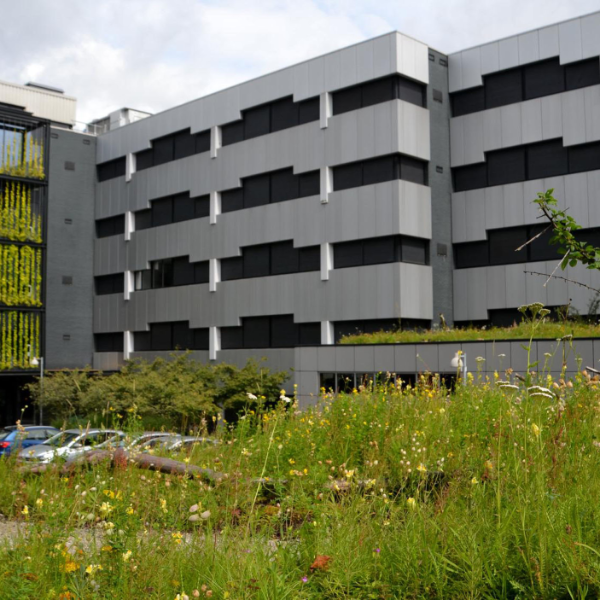The nature-enhancing city:
A motor for improving liveability and biodiversity

The nature-enhancing city:
Nowadays, our cities are more biodiverse than our rural areas. When the Dutch countryside was still an oasis of peace and floral beauty (think of the ‘De bonte wei’ Verkade album by Jac P. Thijsse from 1911), our cities were no match in terms of biodiversity to the rich flora and fauna outside them. How different it is today. Due to the massive intensification – almost industrialisation – of agriculture, the flowery meadows have disappeared. Upscaling has meant that characteristic landscape elements such as hedges, wooded banks, pools and small-scale land parcelling have been changed into the large-scale, monotonous ryegrass and maize fields that we see everywhere. Also, the large increase in infrastructure has cut through old landscapes and our dykes have disrupted natural water systems. Marshlands, forests, heathlands, streams and rivers have also disappeared or been degraded as a result.
This impoverishment of rural areas has led to a reversal such that today our cities are more biodiverse than the countryside. Yet cities still offer a lot of potential for further development in terms of biodiversity – and we should be exploiting this. After all, biodiverse cities make an important contribution to rural biodiversity and play a major role in its recovery. Biodiverse urban areas are more attractive, more liveable and healthier, and there are also economic benefits: green areas help cool cities, they remove particulates from the air, they make people happy, and they provide economic value for the housing problem. Many species that were originally found in natural and rural areas use the city as an important part of their life cycle: the city as an important link and hub for biodiversity.
Biodiverse cities can make an important contribution to restoring biodiversity nationwide. They are the centres from which the recolonisation of the countryside can be conducted – provided we manage to restore the environmental quality there. In other words, from ‘sink’ to ‘source’: the nature-enhancing city! A city that is not only nature-inclusive but also enhances nature. To achieve this, it is important that:
- No hard and fast distinction is made between urban and natural areas. Plants and animals should be able to use the entire cline to the greatest possible extent – from the centres of our cities, through our infrastructure, to the heart of our natural areas. Utilising existing urban space is preferable but urban expansion is also fine, provided the biodiversity of the affected area is increased compared to the existing rural area.
- Building with biodiversity in mind is rewarded by offering more room for development in permits – for example, by allowing more gross floor area if all facades and roofs increase the quality of nature (through elements such as greenery or nesting boxes).
- An (eco)system approach is used which takes into account the regionally and locally occurring (indigenous) species of plants and animals. By allowing for regional differences, cities also gain more local colour. This makes new residential localities even more unique and distinctive and increases their level of quality and maturity.
- All possibilities are exploited in terms of private, commercial and public buildings and infrastructure, both in existing and new urban areas. A targeted municipal approach can help in making private land more biodiverse. Ensure a clear point of contact exists that proactively helps with permits, subsidies and more. The municipality as captain of the private fleet.
- Measures for biodiversity and climate adaptation go hand in hand.
Our urban areas and verges have unintentionally been given a major responsibility. If we approach the housing problem and infrastructural development in this way, we will improve the quality of life and biodiversity. Who would not want that?








